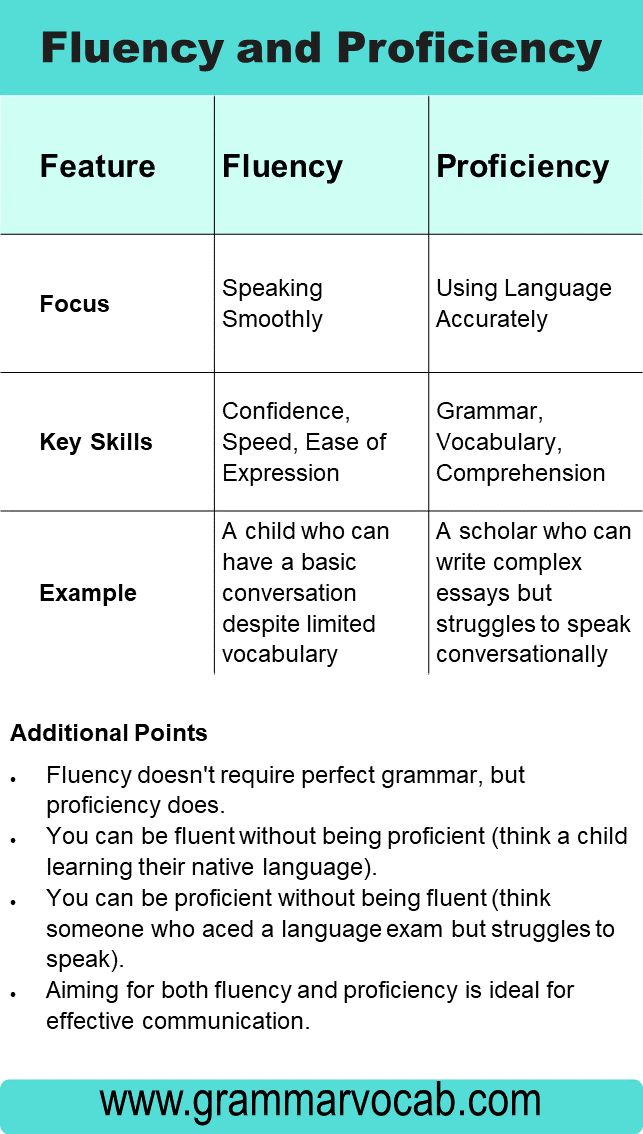When we talk about learning a new language, two words often come up: fluency and proficiency. These words might seem similar, but they have different meanings. This article will explain these differences in very easy English, so everyone can understand.
What is Fluency?
Imagine you’re at a party, chatting with friends, telling stories, and making jokes. If you can do this smoothly in a language, you’re fluent. Fluency is about how comfortably and smoothly you can use the language in real-life conversations. It’s like being able to dance without thinking about the steps. You don’t hesitate much, and even if you make a small mistake, you keep going without a problem.
Signs of Fluency:
- Easy Chatting: Talking about everyday things feels easy.
- Quick Thinking: You can respond quickly without searching for words.
- Smooth Corrections: If you slip up, you fix it smoothly and keep going.
What is Proficiency?
Now, think about someone who knows all the dance moves perfectly, understands the music theory, and can even choreograph a dance. That’s like language proficiency. Proficiency is about how well you know the language and includes grammar, vocabulary, and even cultural aspects. It’s measured by tests and levels, showing how deep your language knowledge is.
Signs of Proficiency:
- Wide Vocabulary: You know lots of words, even the very specific ones.
- Grammar Guru: You understand the rules and can use them correctly.
- Cultural Knowledge: You get the cultural references and can use the language in various settings, not just casual chat
The Main Differences
- Ease vs. Depth: Fluency is about ease. It’s about speaking smoothly and understanding others easily. Proficiency is about depth. It’s knowing the language deeply, including grammar, vocabulary, and even cultural nuances.
- Conversations vs. Complexity: If you are fluent, you can chat, joke, and make friends using the language. If you are proficient, you can understand and discuss complex subjects, read advanced materials, and write in a detailed and accurate way.
- Use vs. Knowledge: Being fluent means you can use the language effectively in everyday life. Proficiency means you have a wide knowledge of the language and can use it in more formal or academic situations.
- Learning Journey: Fluency often comes first. It’s like the first step in a journey. As you become more fluent, you start to learn more about the language. This leads to proficiency. But remember, it’s okay to be more fluent in some areas and more proficient in others.
Can You Have One Without the Other?
Yes! Someone might be fluent in a language, chatting away with friends, but struggle with complex grammar or formal writing, showing a gap in proficiency. On the other hand, a person could score high on a language test (high proficiency) but find it hard to jump into a fast-paced, casual conversation (lower fluency).
Why Both Matter
Both fluency and proficiency are important. Fluency makes it comfortable to talk, make friends, and enjoy everyday life in a new language. Proficiency helps in understanding the language deeply, excelling in professional settings, and studying further. Together, they make you truly strong in a language, ready for both a friendly chat and a challenging debate.
Must Try:
Copys or Copies
Carefree and Careless




